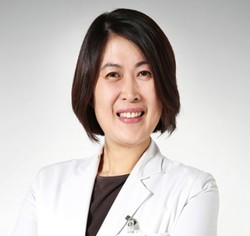Director of Myongji Hospital’s Dementia Care Center and Brain Bank
The government began selecting a dementia brain bank in 2016, and it picked Myongji Hospital as the nation’s fourth hospital to run a dementia brain bank in March 2021.
The other three hospitals operating a government-designated dementia brain bank are the Samsung Medical Center (selected in 2016), the Seoul National University Hospital (2017), and the Pusan National University Hospital (2018).

A dementia brain bank secures postmortem brain tissues based on brain donation registrations of dementia patients, builds a dementia research infrastructure, collects clinical resources such as brain imaging, cerebrospinal fluid, and blood, and distributes brain resources to promote dementia research.
In particular, if an autopsy is encouraged for those who died from neurological and brain diseases and when various autopsy cases are accumulated, the dementia brain bank can secure healthcare data through statistics of each disease.
After the Korea Disease Control and Prevention Agency’s National Institute of Health picked Myongji Hospital to carry out a dementia brain bank project in the first half, the hospital secured many brain resources in a short time until September.
This shows that Myongji Hospital deserves to be evaluated as a hospital with sufficient infrastructure and capabilities to carry out the nation’s fourth brain bank project.
A rapid increase in the elderly population leads to a surge in the number of dementia patients. The resulting social and economic burdens are not limited to individuals and families but the entire nation.
To confirm the diagnosis of degenerative neurological diseases such as Alzheimer’s disease and Parkinson’s disease, which have no cure, it is important to do a postmortem brain biopsy.
However, in Korea, brain biopsy is not active, and only clinical diagnosis is allowed, making it difficult to diagnose and treat degenerative neurological diseases.
Advanced nations, including the U.S., the U.K., the Netherlands, and Australia, have operated brain banks for a long time.
Japan and China are also running brain banks to share brain tissues with multi-institutional researchers and conduct neuropathological diagnostic research.
Most of those countries have formed an international consortium of multiple institutions or a network to overcome the limitation of brain collection.
NeuroBioBank, established by the U.S. National Institutes of Health (NIH) in 2013, consists of six brain banks, including the Harvard Brain Tissue Resource Center. The bank integrates and manages the brain database on a web portal, and collects and stores every brain tissue under the same standard protocol.
BrainNet Europe is an association of brain banks from multiple institutions in multiple countries. Although brain tissues cannot move between countries, the consortium shares information. UK Brain Banks Network has more than 10,000 pieces of brain tissues and centralizes resource management by integrating resources into one database.
In other countries, the diagnosis of dementia through brain autopsy is already common. In Korea, however, brain research is lagging because of cultural factors.
Recently, people made multi-faceted efforts to promote brain donation and improve awareness, helping secure more brain resources. However, more active brain donations will enable postmortem neuropathological diagnosis, which will help the remaining family and descendants predict and prevent dementia in advance.
Also, donated brain tissues will be used for more research, which will help identify the causes of many intractable brain diseases and develop treatments.

